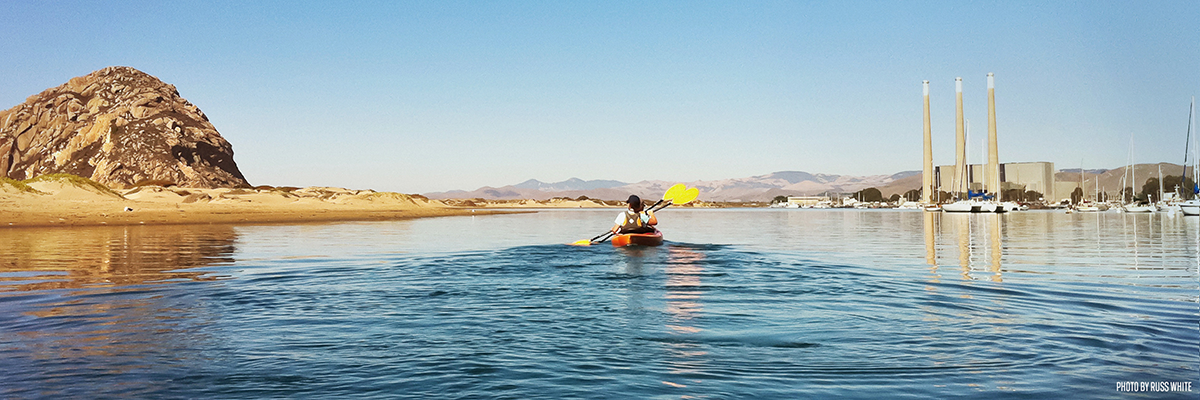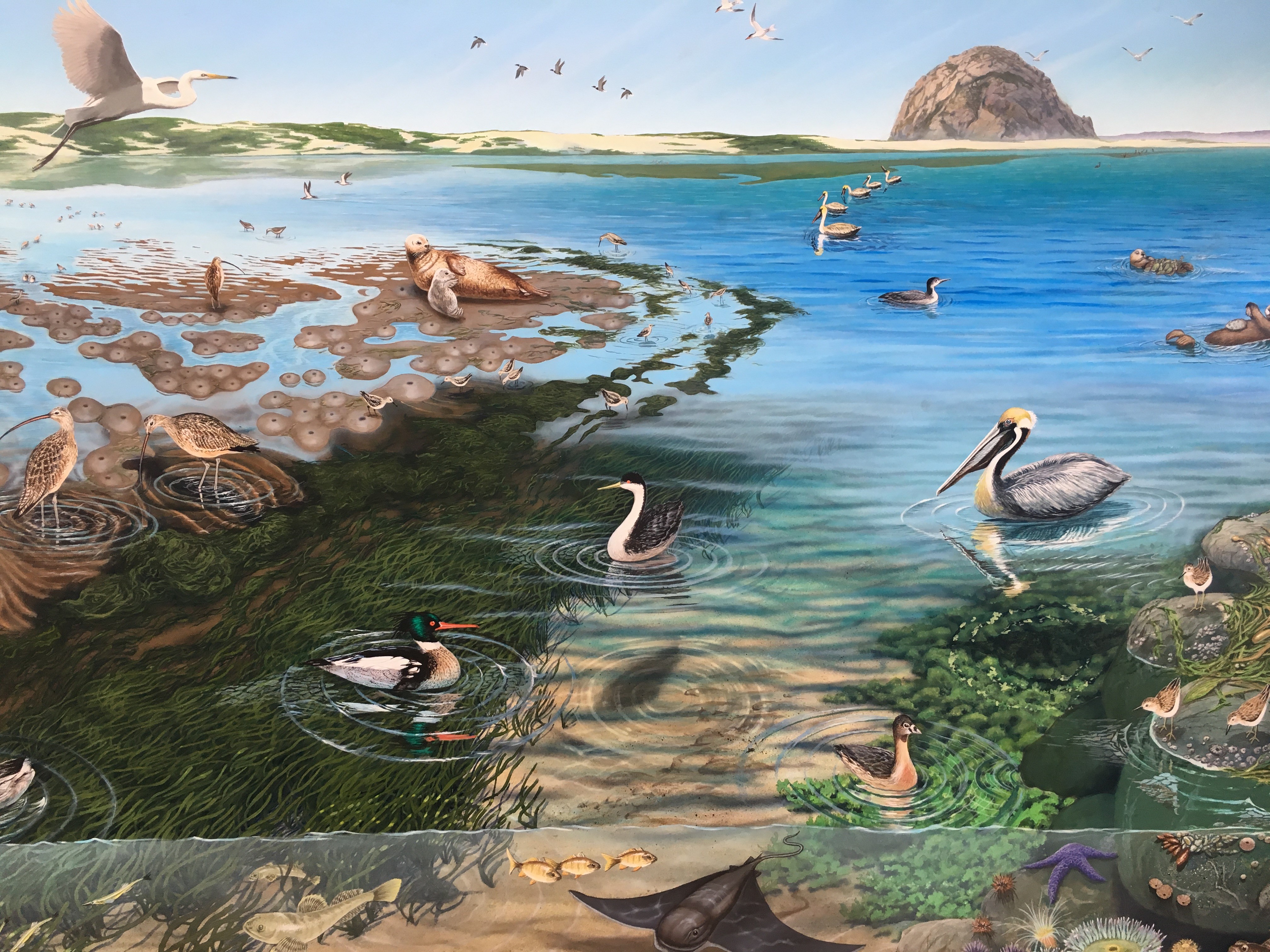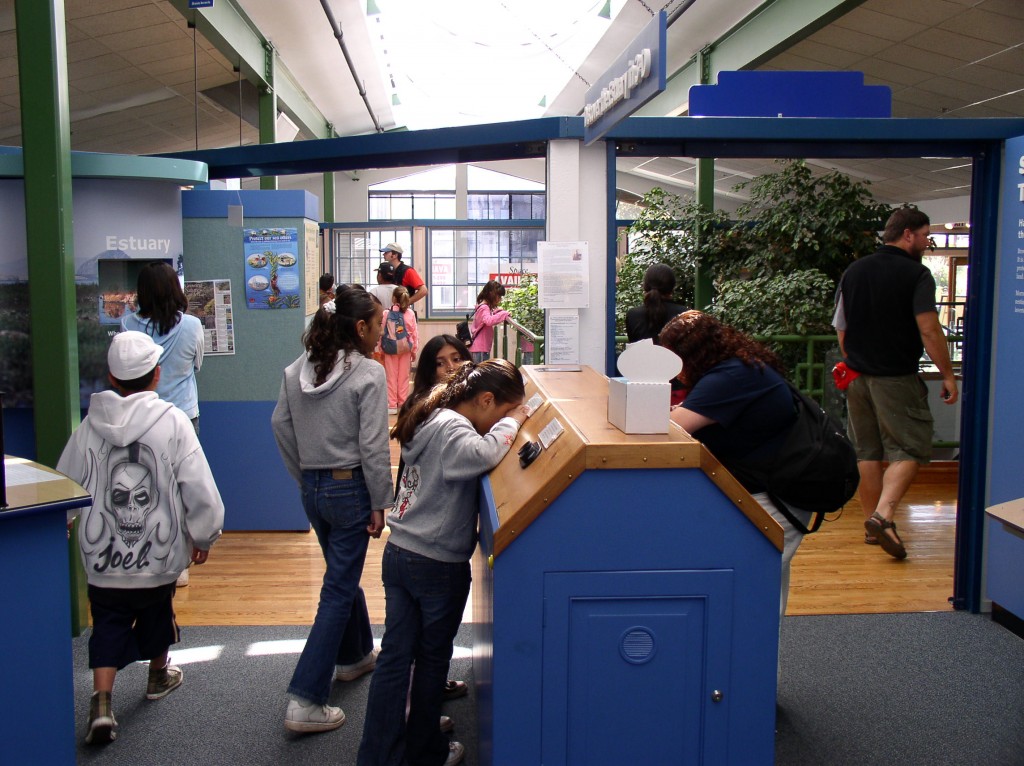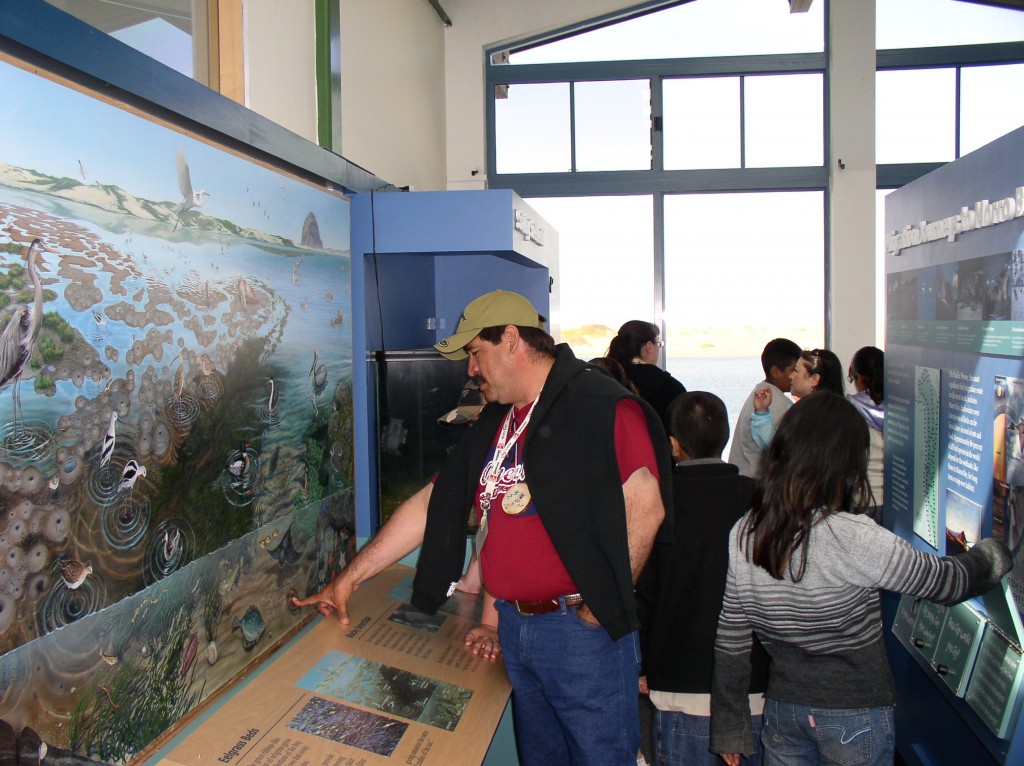Foot traffic counting isn’t only useful for retailers. Our very first customer was Rachel Pass at the Morro Bay National Estuary Program, who needed a way to count visitors in her nonprofit's Nature Center. We enjoyed chatting with Rachel about the organization’s role in preserving a vital ecosystem and how their Nature Center helps educate the larger Morro Bay community.
Joanna, Dor: Hi Rachel! Can you tell me about MBNEP’s mission and how the organization operates within your local community?
Rachel Pass, Morro Bay National Estuary Program: In short, it’s to protect and restore Morro Bay for people and wildlife. We’re a non-regulatory nonprofit, so as opposed to somebody like Fish and Wildlife, we can come together and collaborate with people, but we can’t tell people do this/don’t do that. I think that’s a big part of our success: We can bring all sorts of seats to the table. For instance, we work with the National and California Audubon Society, and we also work with a local duck hunting group. That’s pretty cool.
I wouldn’t have expected that. How does that relationship work where nobody gets angry at each other?
One of the things I’ve seen while working here is the people using the resource, you know, people out there on the bay who are hunting, fishing and recreating, are also very interested in seeing those resources continue on. Hunters and fishers are key conservationists, which is not something everybody expects. It’s great to see everybody working together.
For instance, you probably haven’t heard of eelgrass -- it’s an underwater sea grass that grows in meadows and is a great habitat for juvenile fish species and a lot of invertebrates that serve as a food source for a lot of larger animals like sea otters. We’ve lost 97 percent of our eelgrass beds in Morro Bay since 2007. That’s been a big challenge and one of the main research questions we’re looking to solve right now. We’ve done a lot of planting efforts, taking eelgrass from healthy beds and replanting it in areas it’s grown historically. We had the duck hunting group transporting people in their boats to dive down and put eelgrass roots in and had folks from the Audubon Society bundling the eelgrass rhizomes at tables. Literally two groups working on the same project, coming from different ends of the spectrum.
That’s a really cool story!
It’s a neat project. I wish we didn’t have to tell that story and that the eelgrass was still here.
Absolutely.

"Coastal areas like this are important in the face of climate change, which can cause storms, hotter temperatures, sea level rise, all of those things. We can provide some resilience for coastal communities."
So for those of us who forgot high school biology, can you remind us why estuaries are such important and unique ecosystems?
Estuaries are a space where the salt water from the ocean meets with fresh water from streams, rivers, creating a unique environment where those two kinds of water are mixing. They tend to function as nurseries because they’re often protected from the larger ocean so the wave action isn’t as strong. So that’s valuable as a habitat. They support a wide range of animals both under the water, or birds that live around the habitat. In Morro Bay specifically we have a growing population of otters, which is pretty cool. We used to have 10 and now we have over 30. There are a lot of babies out there now hanging out on their moms’ chests. They’re just these little puff balls. [laughs] I’ll have to send you some pictures.
Yes please. I want sea otter babies on our blog. So, estuaries are these nurturing places but they’re also very vulnerable.
Definitely. The Morro Bay estuary is one of the best-preserved on the California coast. We’re small but important in that way. It is a delicate balance. We do a lot of restoration and conservation projects, especially along flood plains, where we’ll put willows and native plants to capture sediment that erodes on stream banks and flows out into the bay if it’s not captured. This produces a more valuable habitat and prevents the bay from filling in. This sediment can be caused by human activity like development and also larger storms. This year, after a prolonged drought, we got a quite a bit of precipitation. Coastal areas like this are important in the face of climate change, which can cause storms, hotter temperatures, sea level rise, all of those things. We can provide some resilience for coastal communities, but these events also threaten them.
You’re basically giving the bay some armor.
Yeah, we try.
I imagine it might be hard to tell a volunteer that the tree they’re planting will matter 23 years from now. It’s a unique work, so I can see that’s why it’s important to have the educational arm to what you do.
Yes. There are three arms to what we do: Education and outreach, which is where I live, research and monitoring, which is testing water quality in different creek and bay sites, and then restoration and conservation, like what we did with eelgrass. We just published our State of the Bay Report which we do every three years. It’s an update that includes all of our monitoring and research data and other data from local partners. It’s fun to translate all of that science into a public-friendly format, answering questions like: Is Morro Bay safe to swim in? How healthy are the creeks?

This hand-painted mural fills an entire wall of the Morro Bay Estuary Nature Center. It shows the different habitats that exist in the bay and the lands that surround it.
Tell me about what you love most about your role at MBNEP. What drives you?
I love when I get to work with students in classrooms and their teachers. I also love working with our Nature Center docents. We have a great group of people passionate about the bay -- some are retired teachers. Charlotte, one of our docents, is a retired nurse with a great mind for science, and she works really well with people and loves the bay. She and other folks will come in to teach lessons in our nature center or just be ready to answer questions about our different displays. So I love working with people and getting them excited about the bay.
The nonprofit world has a lot of overlap with the retail world in terms of never really having a day off -- what do you do to recenter yourself amid organizing events and writing press releases?
There’s a big paddleboarding and kayaking community in Morro Bay. I personally have two toddlers so I don’t get to leave the house very much. [laughs] Can’t take them paddleboarding, they wiggle too much. Plus, I have no sense of balance.
When did the Nature Center first open? Can you describe the energy of the space and what you love most about it?
It’s been around since 2004. It was funded by a lot of local businesses and some larger grants. We wanted it to be free and open to the public, fun and educational. It has a wildlife viewing area because we’re right on the bay with information about the animals you might see out there, from sea lions to pelicans. I’ve even seen a bat ray floating by.

"Without a people counter, we don’t know how many people are using the exhibits. It’s been great to see which days are the busiest and to plan our docent staffing around that."
How’s Dor been working for you so far?
So, Dor has been really great to have in there. We’ve got a really small staff and we’re only here Monday through Friday. Our docents are only here from spring to Labor Day. Other than those times, it’s largely unstaffed, so without a people counter, we don’t know how many people are using the exhibits. It’s been great to see which days are the busiest and to plan our docent staffing around that. It’s been really surprising too. We’re like, “Why did 130 people come through at this time?” and get online and see, “Oh, that event was 12 miles away, that’s why.”
I heard from our team that you were technically our first customer who just found us online.
I wondered if that was the case! [laughs] It’s been really great! I won’t name names, but we worked with a much larger company before … Dor has been wonderful because everyone has been so accessible and the software actually works on a scale that makes sense for us. It’s been nice to find people who are okay working with a tiny nonprofit. We don’t have retail locations or multiple locations, but our need is real.
Visitor numbers are numbers we report to our grantors. We’re looking to redo quite a few of the exhibits -- it is 14 years old -- we want to update that content to reflect what’s currently going on in the community. To be able to tell potential funders, “Hey, this is how many people this affects and how many visitors we get per season,” that’s a big help for us.
Right, because any data point a nonprofit could report will be reported to a funder. We’re proud that our product can be used by a lot of different kinds of organizations, not just retailers. So we appreciate having you on board.
Thanks! It’s been a really great experience.

The Nature Center is in a unique location, across the hall from your offices on the second floor of a multi-use building. How do you as outreach coordinator spread the word to get people to visit?
It’s hard. We have a handout that I bring to festivals, our website has a “Visit Morro Bay” page, and we see a lot of traffic from there. So I’d say it’s primarily driven online. Morro Bay is a bit traditional in that people really do read the community newspapers. One of our committees banded together and bought us an ad for the Nature Center, so that’s been helpful. And then outreach to teachers.
"It’s interesting to see how people interact with a nature center and nonprofits in general. It’s so personal to people, this place that they love. Creating a space that honors that and takes them to the next level of being able to preserve that experience for the next generation to come visit is what we try to do."
Do you have advice for other nonprofits with visitor centers? Does counting foot traffic have a big impact?
I think counting foot traffic has an impact in a number of ways. One thing we’ve been able to do because and that I would recommend is that having a friendly face in your visitor center is a lot more appealing than having an unmanned room. So being able to know when the most visitors are likely to come through based on historical trends helps us know when our docents should be there. I think that’s incredibly helpful, because even if they’re just asking where the bathroom is, it’s a positive interaction with someone associated with our organization, and that’s huge.
It’s interesting to see how people interact with a nature center and nonprofits in general. It’s so personal to people, this place that they love. Creating a space that honors that and takes them to the next level of being able to preserve that experience for the next generation to come visit is what we try to do. It’s an inspiring place to work.
Any advice to businesses about where to start if they want have a more positive environmental impact?
It’s wonderful to work with local businesses who are open to partnerships with a nonprofit. We have a lot of valuable relationships with kayak and paddleboarding shops. We’ve had in-kind donations of accounting services. Businesses that can lend a helping hand with thanking our volunteers, like a special dinner, a raffle, small gifts -- that’s a huge thing.
Those are fantastic starting points.
Yeah! It was lovely to speak with you.
Likewise. Thank you again.

You can visit the Morro Bay National Estuary Program's Nature Center any day of the week between 10 a.m. and 6 p.m. Find the Center in the Marina Square Building, on the corner of Marina and Embarcadero in Morro Bay, across the hall from the Estuary Program’s main office.